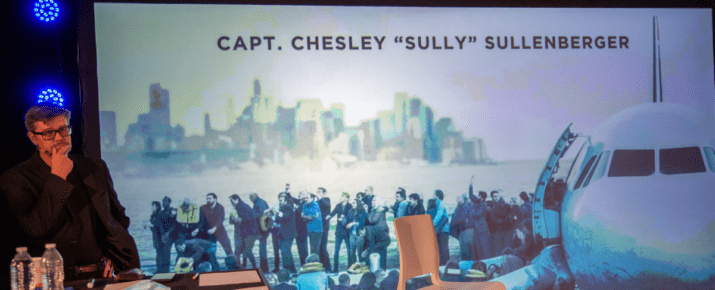How to be a great leader? Get out of the way.
From Surviving To Thriving Virtual Summit | By | 27 Nov 2020 | 2 minute read

Our universes shrunk to our neighborhoods this year, and while the world changed daily, everything else seemed smaller and slower. Finding inspiration and motivation in stiff times is challenging, but we glean strength from teamwork, connectivity, and innovation, and that’s exactly what the diverse panel of speakers at SafetyCulture’s Virtual Summit 2020 got together to discuss.
“No problem has ever been solved by people saying ‘hey, let’s work apart’. Teamwork is what allows us to accomplish our goals,” said Captain Scott Kelly, NASA astronaut and speaker at this year’s virtual SafetyCulture Summit.
Relive remarkable stories of leadership, gain insight into elevating your people, and find opportunities in the impossible. We break down how to lead a team through a crisis from all angles.
To lead, first learn to listen
“Great leadership I believe comes from kindness, from understanding, from compassion, from being able to listen, from being able to work as a team,” American legal clerk, consumer advocate, environmental activist, and summit speaker Erin Brockovich explained.
During Erin Brockovich’s famous investigation of the health impacts of water contamination and the resulting class-action lawsuit in 1993, she learned the value of trust in a team, and how a culture based on empathy and empowerment fosters success. Your best asset in a tough situation is always going to be your people. “Leverage your community, your people. … What they really need is support,” she said.
To lead, cultivate your company’s culture
Captain “Sully” Sullenberger, the “Miracle on the Hudson” pilot whose water landing on New York’s Hudson River saved the lives of all 155 on board, also highlighted the importance of a safe and supportive team culture. “A leader must create an environment in which we all can and are willing to do our best; a culture in which we all share the rewards, and we all have a shared sense of responsibility for the outcome,” he told the summit.
“People come up with ideas. It’s that simple. It’s our job as leaders to give them the means to do so,” added CEO of Tennis Australia and panelist Craig Tiley, whose team had the unenviable job of recalibrating two Australian Opens in a row – first amid the country’s worst bushfire season on record, and now due to the pandemic. But an open and agile organizational culture has allowed his team to pivot and find new avenues for the sport to grow. While constant change is taxing, it’s necessary. “If we’re not an organization that can keep shifting, we’re not going to survive,” he said, crediting Tennis Australia’s resilience in part to an openness to new thinking, innovation, and fresh insight from his diverse team.
To lead, give people the tools they need — then get out of the way
Brockovich noted that a leader’s primary job is not to prescribe rigid ways of operating, but to uplift her team with more knowledge, information, and agency. Embracing new technologies is essential to that cause. “I love the tools and technology [SafetyCulture] are using. It’s about putting power in people’s hands,” she said. It makes much more sense to enable employees and make them part of the solution, creating a positive feedback loop.
While the pandemic has upended industries, it has also opened doors to opportunities for innovation, encouragement, and leadership outside the status quo. “Never stop investing … never stop learning,” said Captain Sullenberger. “I think that’s become a necessity for us now as the pace for change accelerates. We must keep learning, changing, evolving ourselves.”

Dig into the insights you need to reset your operations and get back on track.
Download the full report here.
Important Notice
The information contained in this article is general in nature and you should consider whether the information is appropriate to your specific needs. Legal and other matters referred to in this article are based on our interpretation of laws existing at the time and should not be relied on in place of professional advice. We are not responsible for the content of any site owned by a third party that may be linked to this article. SafetyCulture disclaims all liability (except for any liability which by law cannot be excluded) for any error, inaccuracy, or omission from the information contained in this article, any site linked to this article, and any loss or damage suffered by any person directly or indirectly through relying on this information.





